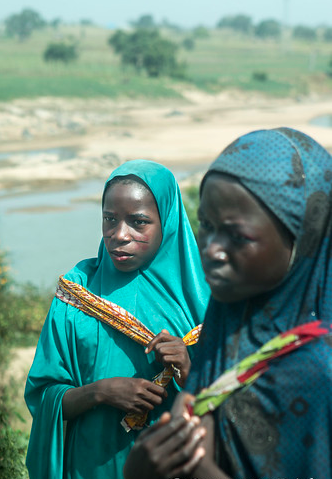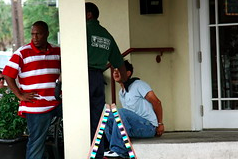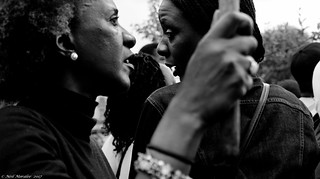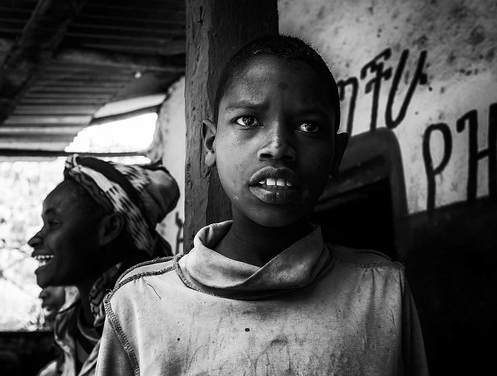How to Resolve Conflict Peacefully
Instructional Strategies and Activities
Warm-Up
Time: 3 minutes
To connect new knowledge with existing knowledge and as a warm‐up, teacher will ask students “What is Conflict?”
- Ask students to think about that for few seconds. Ask student to share with neighbor what he/she think this word means.
Introduction
Time: 7 minutes
- Teacher will ask student to raise their hands if they’ve ever been involved in a conflict and share their thoughts about that.
- Ask students to take out some paper and a pencil to take notes. Write down any KEY words to come up with a definition of “Conflict.”
- Ask students to share their definition with class.
- Explain to class the meaning of conflict.
Presentation / Modeling / Demonstration
Time: 10 minutes
Examining pictures of conflicts:
- Divide students in groups and then give each group a picture involves a type of conflict concepts and ask students to describe the possible scenarios based on the pictures for 5 minutes.
- Ask them to write a sample dialogue between the characters in the scenarios.
Discussing and summarizing students’ thoughts:
- Have each group share their picture and discussion with the class.
- Students and teacher will discuss scenarios and appropriate responses.
- Ask the class what evidence of conflict do they see in their images? What suggestions would they have for appropriately resolving this conflict?
- Teacher can ask more questions to stimulate students thinking during sharing their ideas.
Guided Practice
Time: 15 minutes
Discussing:
- The teacher will discuss with students the positive side of conflict away from violence and feeling hurt.
- The teacher will explain to students how to control the conflict and consider it a good chance of practicing discussions and sharing thoughts.
- Tell students that conflict is always neutral and not all conflict is bad; conflict is an experience that provides opportunities for growth or positive change.
- The teacher will ask students to back quickly to the pictures and think of possible positive outcomes.
- Tell students how our choices can form the ends of conflict whether positively or negatively.
Learning to resolve conflict peacefully:
- The teacher will hand out the attached “Conflict Resolution strategy” sheet.
- Discuss the details of the handout with students.
- Explain the strategies that mentioned in the handout to help them to resolve conflict peacefully.
- Discuss how can we control our emotions during conflict away of madness , how it is important to express our feelings, and how can we slow down the action such as, taking deep breaths, count to 10 to buy time to think, etc.)
“Conflict Resolution strategy” hand out.
Application
Time: 10 minutes
Phrasing sentences using I‐massage to de-escalate conflicts:
- Discuss with students what an “I‐massage” is, as mentioned on the handout.
- Explain to the class the function of “I‐ massage”.
- Explain how using “I feel” massage in the beginning of the statement rather than “You are” massage will less aggressive and accusing.
- Display two sentences for students to read; one start with “I feel” and the other one start with “You are” .
- Ask the class which sentence makes them feel better.
- Display some sentences start with “You massage” that put the blame on others and allow students to transform it into an “I‐ massage” that express person’s feeling.
Assessment
Time: 15 minutes
- Ask students to back to their groups and pictures, and ask each group to write a sample
dialogue between the characters in their picture in which they work to peacefully resolve the
Conflict.
- Tell groups to use the strategies that they learned from the handout and to use “I‐statements” strategy in writing their final dialogues.
- Have each group to share their dialogues with class.
- The teacher will ask and discuss these two questions:
- What are some examples of win‐win solutions (As mentioned in the handout)?
- How can you be able to handle conflicts in peacefully way and how can that benefit you throughout your entire life?
- The teacher can assess the students understanding through their discussions and their interaction on phrasing sentences using I‐statements strategy.
- The teacher can assess the students understanding through their interaction in writing a definition of “Conflict.”
Key Terms and Concepts
Conflict: disagreement or argument between people. Conflict can be physical violence, name-calling, threats, bullying, teasing, and other forms of negative communication.
Conflict resolution: working out a problem or disagreement without fighting, running away or going against your feelings.
Positive communication skills: being a good listener, considering and respecting the other person’s point of view, working together to think of solutions, and learning to relax the body and calm the mind during high tension situations.
“Conflict escalation: is the process by which conflicts grow in severity over time.”
Phrasing: express something into words.




